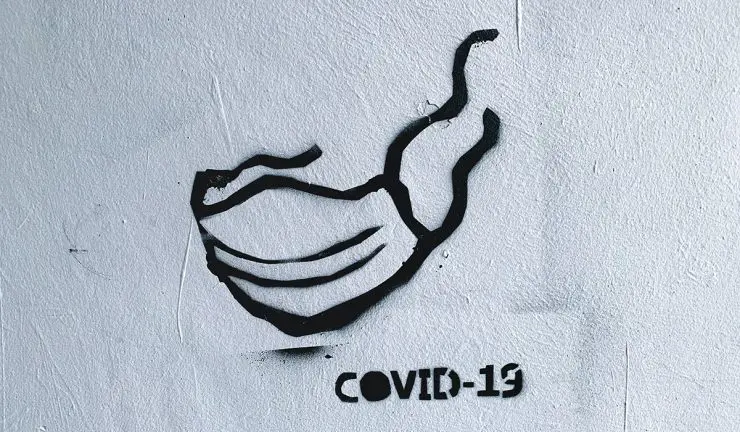What to Learn from 4 Invitations Jesus Gave His Disciples
We often think of teaching as something that is accomplished through words alone, but the truth is, sometimes the best teaching happens through a combination of words and actions. Even in formal education, much of the training includes both classroom and practicum (lab) sessions. And it turns out that is an excellent way to ensure that what is being taught is being caught.
According to a UChicago-led study, students who physically experience scientific concepts understand them more deeply and score better on science tests, “In many situations, when we allow our bodies to become part of the learning process, we understand better.” The study also says: “Reading about a concept in a textbook or even seeing a demonstration in class is not the same as physically experiencing what you are learning about.”
This is how God intended his message to be shared. He gave us His Word, His Holy Spirit, and our own testimony of relationship with him. He also gave us an example in the life of his Son – Jesus left us a model of disciple making that included entering into relationship with the disciples. They walked together to their destinations, they ate meals together, they went to weddings and funerals, they experienced life alongside each other for 3 years.
Jesus was so good at knowing when to speak and when to demonstrate his teaching. Throughout his time with them, as prepared his disciples go out into all the world and disciple others, Jesus issued 4 invitations with both verbal and demonstrated components.
Four Invitations:
Come and See
Jesus invited two of John’s followers to come and see – Come and see where he was staying, come and see who he was. Jesus did not use words alone to answer the question of where he was staying – he wanted them to actively come and ‘SEE’. He was inviting them into his life, into relationship with him.
This is the first invitation we should be giving to someone who is seeking Jesus, an invitation into relationship with us, where we have the chance to demonstrate who Jesus is. There is nothing wrong with sharing the Gospel with someone through your words and your testimony, but when you combine your words with time, actions, and relationship they will have the opportunity to go much deeper and take root.
Jim Putman, author of this blog, is writing a new book called The Death of Discipleship about the dynamics of pride and humility in the discipleship process. Download the free primer for this book here.
Jesus looked around and saw them following. “What do you want?” he asked them. They replied, “Rabbi” (which means “Teacher”), “where are you staying?” “Come and see,” he said. It was about four o’clock in the afternoon when they went with him to the place where he was staying, and they remained with him the rest of the day.” John 1:39
Come and Be
When Jesus gave the invitation to follow him, it included a change. When he called the disciples, he let them know that the invitation demanded that they be changed into fishers of men. He was referring to the process of change they were to undergo over the course of the next few years. This process took place with Jesus training them using a combination of teaching and modeling. There were times he told parables to the crowd and then unpacked them more deeply with his disciples. There were also times he demonstrated traits he wanted them to take on through his actions – one example would be when he washed their feet, demonstrating the humility of being a servant leader.
We tend to take on the habits and characteristics of those we spend time around. When we enter into a discipling relationship with someone, we model for them what it looks like to spend time with Jesus as we exhibit his characteristics.
“And he said to them, “Follow me, and I will make you fishers of men.” Matthew 4:19
“You were taught, with regard to your former way of life, to put off your old self, which is being corrupted by its deceitful desires;
to be made new in the attitude of your minds; and to put on the new self, created to be like God in true righteousness and holiness.” Ephesians 4: 22-24
“Looking at him, Jesus felt a love for him and said to him, “One thing you lack: go and sell all you possess and give to the poor, and you will have treasure in heaven; and come, follow Me.” But at these words he was saddened, and he went away grieving, for he was one who owned much property.” Mark 10:21-22
Come and Do
As Jesus continued his time with the disciples, he began to find situations where he could give them a place to practice some of the things he was teaching them. He gave them a chance to take the things he had modeled for them and put them into practice while he was there to observe them. One of the best examples of this was the feeding of the 5,000 in Matthew 14. The disciples were accustomed to bringing peoples problems to Jesus, so he could take care of them, but this time he turned it around and put it on them. He saw the crowd of people and decided to test his disciples – he asked them: “Where can we buy bread to feed all these people?” He gave them an opportunity to come up with a plan to care for the people and their needs.
When we see a problem or people in need in our community or congregation, inviting input or suggestions from the person we are discipling gives them a chance to put some principles into practice. This will give them a feeling of ownership, and allow us to debrief with them how it went and what could have been done differently. Life becomes the ‘lab’ where some of the most effective teaching can develop. This also gives us some insight into the depth of their maturity and where they may need to grow.
“Jesus soon saw a huge crowd of people coming to look for him. Turning to Philip, he asked, “Where can we buy bread to feed all these people?” He was testing Philip, for he already knew what he was going to do. Philip replied, “Even if we worked for months, we wouldn’t have enough money[a] to feed them!” Then Andrew, Simon Peter’s brother, spoke up. “There’s a young boy here with five barley loaves and two fish. But what good is that with this huge crowd?”“Tell everyone to sit down,” Jesus said. So they all sat down on the grassy slopes. (The men alone numbered about 5,000.) Then Jesus took the loaves, gave thanks to God, and distributed them to the people. Afterward he did the same with the fish. And they all ate as much as they wanted. After everyone was full, Jesus told his disciples, “Now gather the leftovers, so that nothing is wasted.” So they picked up the pieces and filled twelve baskets with scraps left by the people who had eaten from the five barley loaves.” John 6:5-13
Come and Go
Towards the end of his time with the disciples, Jesus began to send them out without his physical presence, but in his name. When they returned he had opportunity to talk through what had happened and give them further feedback and training. This was an important part of the discipleship process then, and it still is today. We need to train the people we are discipling to put their trust and confidence in God, we are pointing them toward dependence on him, not on us. As they venture out into the unknown they will rely on what they have learned and on the Holy Spirit’s guidance. It is important that they have an opportunity to come back and debrief the experience with their discipler – so that they can determine if there is anything they should have done differently. It is also a time that their discipler can give them encouragement and celebrate their step into ministry and their growth as a disciple.
“When Jesus had called the Twelve together, he gave them power and authority to drive out all demons and to cure diseases, and he sent them out to proclaim the kingdom of God and to heal the sick.” Luke 9:1-2
“The seventy-two returned with joy and said, “Lord, even the demons submit to us in your name.” He replied, “I saw Satan fall like lightning from heaven. I have given you authority to trample on snakes and scorpions and to overcome all the power of the enemy; nothing will harm you. However, do not rejoice that the spirits submit to you, but rejoice that your names are written in heaven.” Luke 10:17-18
The final and ultimate Come and Go is the Great Commission found in Matthew 28:19-20. Jesus sends them (and us) out into all the world to make disciples. And he ends this last invitation by letting us know that he will be with us always.
When we follow Jesus’ model of teaching, the disciples that are made will have an example to follow to go and make more. These 4 invitations, when given, received, and acted on – will help people move through their discipleship journey towards spiritual maturity. It will lead them to learn through both teaching and experience, and allow them to develop their own relationship with the God who both sends them out and goes along with them.
“Therefore go and make disciples of all nations, baptizing them in the name of the Father and of the Son and of the Holy Spirit, and teaching them to obey everything I have commanded you. And surely I am with you always, to the very end of the age.” Matthew 28:19-20
Written by Jim Putman
This was originally posted on Jim Putman’s blog here. Used with permission.





